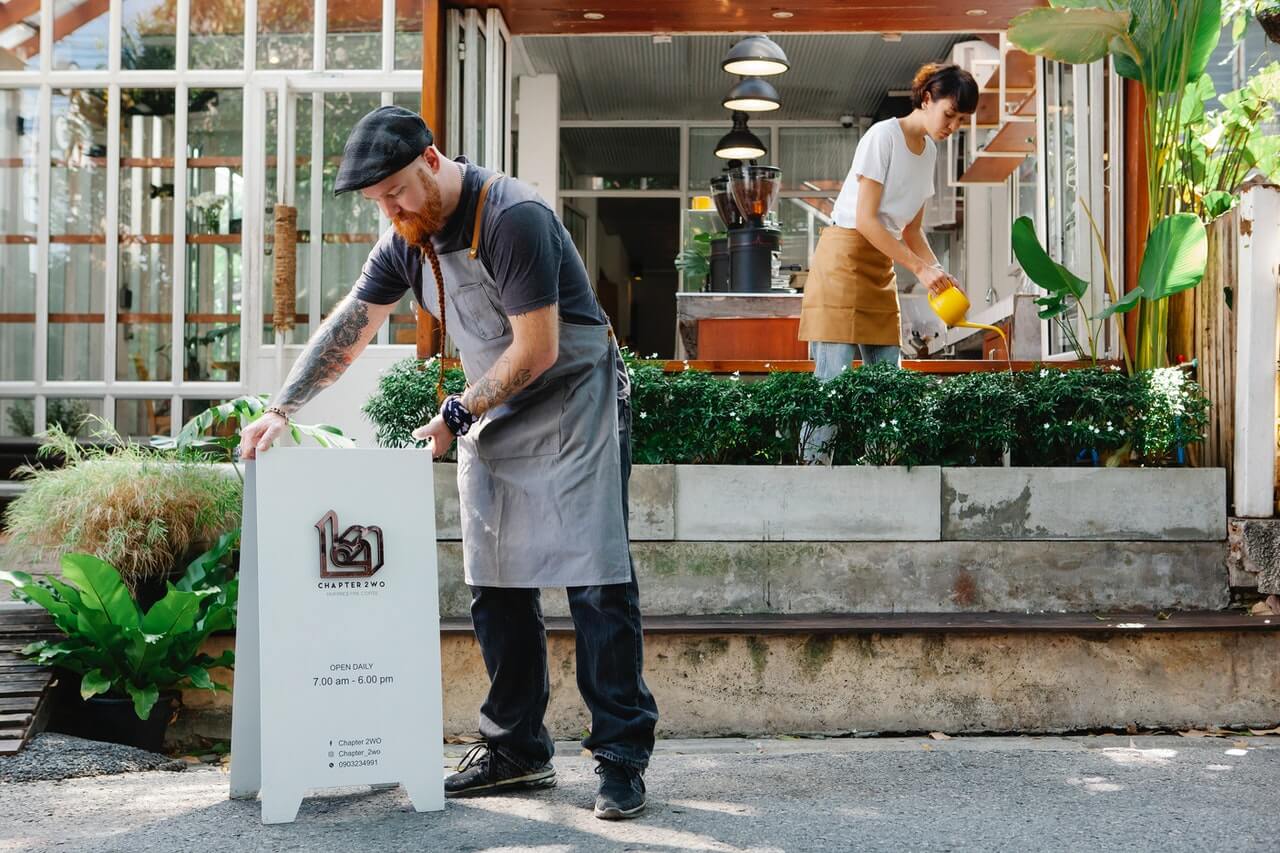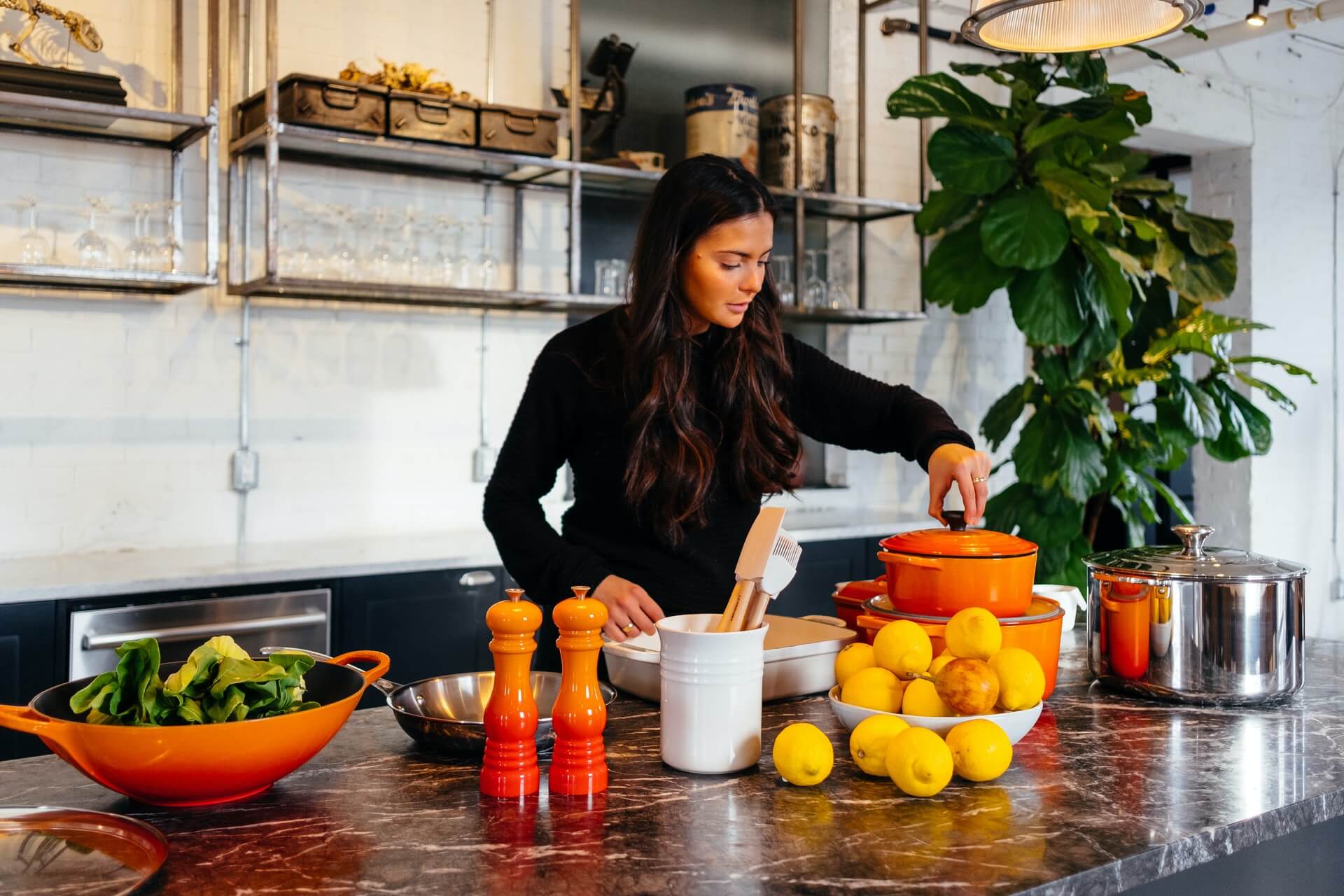Starting a food business from home is a great way to combine your culinary interests with a career. However, like opening your own furniture store, a home-based food business requires passion, personal skills, time for research and planning, licensing requirements, money to invest in the necessary resources, and marketing strategy. According to Forbes, 90% of food stores failed in the first year. Therefore, this article shows you how to start a food business from home easily and effectively in 11 steps.
- Step 1. Review your necessary skills to operate a food business from home
- Step 2. Research food market
- Step 3. Choose a competitive advantage
- Step 4. Build a pricing model
- Step 5. Find food ingredients
- Step 6. Invest in a POS software
- Step 7. Prepare a business plan
- Step 8. Register your legal entity
- Step 9. Get licenses and permits
- Step 10. Prepare necessary resources
- Step 11. Promote your business
- Related questions
Step 1. Review your necessary skills to operate a food business from home

Passion can go a long way, but you’ll also need hard work and business intelligence when thinking about how to start a small food business at home. So, take a moment to write down your strengths, review your partners and network, and analyze the resources available to you. There are many skills required to manage retail operations, including:
- Choose a business structure
- Find funding
- Look for partners to supply raw materials and distribute
- Create menu
- Carry out marketing campaigns
- Recruit staff and manage employee performance
- Purchase ingredients and equipment
- Build networks and resources to help when you run into something you don’t know how to do or understand
Step 2. Research food market
Emerging food trends

If you don’t have a product or clear idea of how to start selling food from home, look at current food trends and check out the search volume at Google Trends. For example, mocktails, plant-based proteins, and kombucha beer are among the hottest foods in 2020. In addition, they speak to consumers’ priorities, for example, health care trends in food. Your business can then penetrate the market and you can sell food according to the health benefits of your food products.
Your competitors
The food industry is very competitive, and some segments are already saturated. So look up your competitors and see what they’re serving, their serving sizes, and how much they’re charging. It tells you where there are gaps that you can fill with your business.
Food community

The food industry is very competitive. Therefore, it’s essential to research communities before starting a food business from home. In addition, you can attend business networking events. It’ll give you an excellent opportunity to network and learn from local food business people. Suggestions for you include:
- Small Business Development Centers
- Local Chambers of Commerce
Step 3. Choose a competitive advantage
Find a niche food market

Just because no one is doing business on the market doesn’t mean you can make a profit. It requires customers wanting and willing to buy your products. So, finding holes in the market will help you decide what foods you want to sell and how to start your own food business. You can focus on specific niches, such as delivering meals to new mothers or healthy snacks. Popular food business options include:
- Baked goods
- Meal delivery services
- Wedding and special event catering
Offer safety food delivery during COVID-19

With the lockdown measures to prevent the spread of COVID-19, you can switch to an online strategy and set up contactless curbside pickup instead of in-store pickup or shopping. You can use software that supports curbside pickup to set up these delivery methods for your store.
Get consulted about specific recipes
According to Clippy McKenna, founder of the food seasoning company Clippy’s, you should test your recipes with your family and friends if you can’t do comprehensive market research. Any feedback is helpful to improve and have a more objective view.
Step 4. Build a pricing model
Determine the food cost

You will have to be mindful of all the small ingredients that go into a dish when considering how to open a food business. Professional kitchens use several formulas and measurements to determine these numbers. An essential step is calculating food cost percentages and comparing formulas before setting prices. It includes the standard and ideal food cost percentage formula. Controlling the food cost percentage will help you get a menu of foods at a reasonable price and control the suppliers’ cost of input ingredients. According to the Restaurant Report, the standard food cost percentage is 28–35% of sales to ensure your store is profitable.
Do price evaluation

Then, your pricing should be based on the cost of ingredients. If your prices are too high, you’ll risk alienating your customer base. Conversely, undervaluing could set a precedent that is hard to break. You may earn customers, but you won’t make a reasonable profit, making you feel frustrated and wasting your time. For example, you cannot profit if you charge $25 for a cake job that takes you 5 hours to complete, plus the price of the ingredients. Finally, when you’re pricing your product, you must leave room for price fluctuations to counter the increase and need to review it at least every two years.
Step 5. Find food ingredients
Choose reliable suppliers

Your suppliers are the businesses that make sure you get the food and products you need to keep your food sales going. Find reliable, trustworthy suppliers to ensure that you always receive your supplies on time and at the best prices. Where your food comes from can also be a selling point for your food business, as sustainable companies have recently become more attractive to customers, including:
- Locally sourced food
- Trade publications or professional organizations, such as the National Restaurant Association
Consider purchasing food ingredients in bulk

In the beginning, you might think you’re trying to save money on raw materials and only buy the necessary items for the week’s orders. However, you’ll quickly realize you’re saving a significant amount of money by planning and buying the everyday items in bulk. Moreover, when you buy in bulk in advance, you save money in the future. Besides, you must control inventory regularly and accurately. That’s how to start a small cooking business from home sustainably.
Step 6. Invest in a POS software

With the peculiarities of starting a food business from home, you need to separate roles for an efficient workflow while monitoring all your resources and inventory in one place. Recording food orders in Excel files or notebooks can be error-prone and time-consuming as the number of orders grows. If you have a small budget, you should consider investing in a free and open source POS system to centralize all performance data in real time. You can customize the code to meet your unique business requirements, including:
- eCommerce POS integration: Connect your website to a physical store POS
- Quick setup: Set up menu and inventory data in just a few hours
- Create and manage orders: Offer ease of use and fast speed to better serve customers
- Daily X-Report and Z-Report: Confirm payments and quickly check for errors; take a snapshot of your store performance each day to see how cash flows in and out during business sessions
- Visual sales reports: Get a complete picture of your online and offline business, helping to run your business with confidence
- Extensive inventory reporting: Thoroughly analyze your material efficiency
Investing in new software and systems is really costly, especially when you are a startup. Therefore, it is highly recommend to look for these free and open source software to help run your business smoothly with minimum cost.
Shopify is one of the best free platforms to start a food business. Boost your sales and turn repeat customers into loyal fans – open your Shopify store today and get started for just $1 for 3 months! Don’t miss this limited-time offer to grow your business with powerful tools designed to increase conversions.
Step 7. Prepare a business plan
Summary of business strategy

A business plan of how to make money selling food from home doesn’t need to be too formal. However, it will help you have a clearer idea and set more specific milestones to accomplish your goals. In addition, a business plan is necessary if you need to financially support and convince investors of your overall business strategy and financial prospects. If you need help writing a business plan, you can use the U.S. Small Business Administration’s template.
Budget

A business budget is all the expenses you will need to cover to start your business. It includes the funds to run the business when it starts and a longer-term view of how you’ll make money and how much you expect to earn. A home catering business requires less capital to start than a full-fledged restaurant. According to Profitable Venture, the average start-up costs for a food business from home are $10,000—44,000. The costs of starting a food business from home include:
- Business registration fee and business license
- Equipment
- The initial investment in food products
- Cost of employees and management team
Funding options

The amount of money you need to start is one of the main concerns when starting a food business from home. The initial investment in a food business from home can be expensive, and it can take months or even years before the business becomes profitable. However, you’ll need to write down all of the relationships and loan terms to protect yourself and your company in the future, even if your family and friends help invest capital in bringing the business up. You can start your new food businesses with capital from:
- Angel investors
- Friends and family
- Bank loans
Step 8. Register your legal entity

How to start a food business from home legally
While most home-based food businesses are usually rooted in a hobby, it’s still a good idea to set up and run the business as a public entity. For example, California allows home food businesses to waive certification as a commercial kitchen if you meet specific criteria. However, the Food and Drug Administration (FDA) requires you to register your home business. The rules for registering your business with the state you’re operating in are on your state’s Secretary of State website. Your legal entity enable the management of your retail operations, including:
- Keep corporate liabilities separate from the assets of individual owners
- Sign up for insurance for business and employee risks
- Keep business accounts separate from personal accounts
- Register the product as a trademark in the company name
Register for EIN
Federal Employee Identification Number (EIN) helps you get business loans, manage taxes, open business bank accounts. If you apply online from the Internal Revenue Service (IRS) website, you can get an EIN in minutes.
Step 9. Get licenses and permits

Register necessary licenses
When starting a food business from home, the most crucial step is to make sure you are legally licensed to prepare and sell food. There are many different certifications and permits required for food businesses, depending on the type of food establishment you open, where you are located, and whether or not you sell alcohol. Here are the most common type of food business permits and certifications:
- A certificate of occupancy (CO) for your kitchen
- A food handling permit
- A license to sell food from home
- A resale license to buy ingredients at wholesale
- A liquor license (beer or wine) to sell alcohol
- State-required food handling courses
Check local zoning laws
You need to make sure that you can run a food business from home. Otherwise, you may have to rent professional kitchen space. Additionally, you may need to ensure that your cooking equipment meets all state food cleanliness requirements. In general, it means that you will have to ensure that:
- Your business kitchen is separate from your personal kitchen
- You do not use your professional kitchen utensils for personal use
Step 10. Prepare necessary resources
Kitchen equipment

Depending on your food business, you may be able to buy in bulk or rent equipment that may be cheaper for you, including:
- Cookware
- Glassware
- Bowls
- Spoons
- Mixers
- Flatware and utensils
- Cold storage
- Cleaning supplies
- Packaging materials for wrapping food
Label devices
Some states have labeling laws for selling food from home. You can check with your Department of Public Health for more details. You will need to create ingredient labels to stick on your food packages. The easiest is to use a computer and printer to do this.
Food staff team

Even the most minor establishments often hire more people to increase production. How many people you hire depends on your needs to run your store operation smoothly. The employee positions you may need includes:
- Hosts
- Bartenders
- Dishwashers
- Delivery drivers
- Busboys
Step 11. Promote your business
Create professional images

Home-based food business’ biggest mistake is assuming everyone loves your product and people will buy it. On the contrary, you must spread the word about your brand. The most effective ways include:
- Design brochures and business cards
- Make sure your product packaging is professional and reflects your store image
Traditional marketing and word of mouth
The simplest way to get your first customers is to tap into the group of friends you’ve tried the food with and the mentors you’ve created while attending your business networking events. Plus, you can give away samples of your food at local farmer’s markets and fairs for free.
Website

A website can be a place to post information for your customers, such as menus, business hours, and specials. Nowadays, there are many pre-built eCommerce platforms to build your small food business website easily and quickly. The most popular platforms are Magento, WordPress, and Wix.
Online reviews
According to a TripAdvisor survey, 94% of American diners will consult online reviews before choosing a restaurant. So try offering a free perk to encourage customers to leave a review. That’s how to make money selling food from home effectively.
Social media marketing

If you use social media platforms like Instagram, Pinterest or Facebook, post pictures of your products and recipes that use your food. Post delicious-looking ones, and customers will want to try it. Make sure you interact with consumers and encourage them to see you as a company that will fulfill their needs.
Point of sale marketing
Finally, you can sell directly to focus groups and supermarkets as you scale. Show them you have a focused plan and strategy to fit their food products’ shelf space.
Related questions
Can you make food at home and sell it?

Yes, you can make food at home and sell it. However, you should consider shelf life, storage, and transportation of your food items. For example, frozen foods require specialized shipping or local delivery, while cookies can travel further.
How do you sell food on Instagram?

To sell food on Instagram, it’s super important to connect customers with your story. Branding on Instagram is crucial in helping influence customers to buy food products without tasting them first. It includes photography like:
- Do your photo sessions or hire a professional with experience in styling and proper food lighting
- Take photos of product packaging and close-up details of the product to show authentic textures and colors
- Lifestyle photography suggests serving and pairing ideas
Can I sell food on social media?

Yes, you can sell food on social media. It’s the most cost-effective way to start a small food business. However, make sure you comply with your local laws and obtain the necessary certifications to cook and sell food online. Alternatively, you can also offer cooking and baking classes online.
Final thoughts
A home-based food business can be a great way to earn extra money while doing something you enjoy. But, while homemade cooking may seem more fun than work, it’s still a business that requires planning and research. Hope this article has answered all your questions about how to start a food business from home. It includes legal issues such as licensing, food label design, marketing, purchasing ingredients, kitchen equipment, investing in POS software to control ingredients and cash flow, and business performance. We recommend you try in small batches with affordable packaging and sell your food items to a handful of retail locations before starting a food business from home.














This blog post is a fantastic guide for aspiring food entrepreneurs. The step-by-step approach and practical tips provided make it an excellent resource for anyone looking to turn their culinary passion into a successful home-based business. The emphasis on legal considerations, marketing, and customer engagement is commendable. I found the insights on managing finances and sourcing ingredients particularly valuable. Thank you, Magestore, for sharing this comprehensive and inspiring article. It’s motivated me to take the first steps towards my dream food business!
The article is a comprehensive and practical guide for aspiring food entrepreneurs. The article covers essential steps, from developing a business idea and creating a unique selling proposition to legal and safety considerations for home-based food businesses. With helpful tips and actionable advice, this article equips readers with the knowledge to turn their passion for cooking into a successful home-based food venture. A must-read for anyone looking to embark on a delicious and rewarding journey in the food industry!
Thanks for writing such a splendid post. I keep visiting the webpage that helped me and many others. I don’t usually comment but this had me enough of that myself and this article has given me the to do.
The blog was very informative and helpful, I came across many new things. I hope you keep uploading more blogs.
What’s better than home-cooked food? A home-cooked food business. I love this concept, and thanks to you & this article which provides great insights to new entrepreneurs who want to get into the industry.